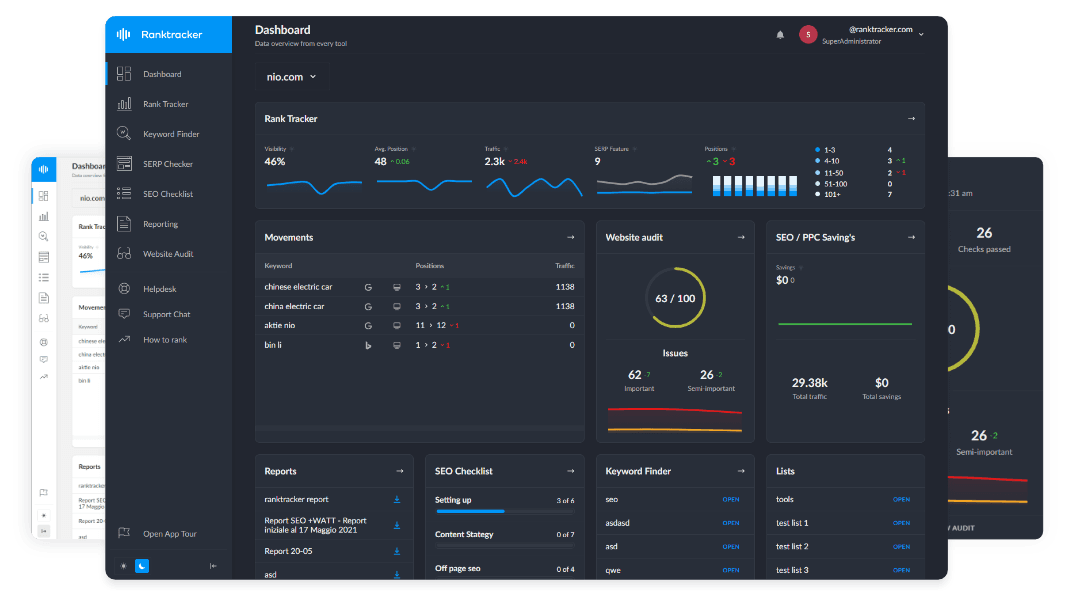Intro
Technical SEO is the backbone of your website’s performance in search engines. Without a well-optimized site structure, even the best content may not rank. This guide walks you through common website issues and how to fix them for better rankings.
1. Fix Crawling & Indexing Issues
Search engines need to crawl and index your pages correctly to rank them. If they encounter obstacles, your site’s visibility can suffer.
Check for Indexing Problems
- Use Google Search Console to inspect URLs and ensure they are indexed.
- Fix noindex tags accidentally blocking important pages.
- Resolve duplicate content issues with proper canonical tags.
Optimize Your Robots.txt File
- Ensure search engines can access necessary pages.
- Block low-value pages like login and cart pages from indexing.
Submit an XML Sitemap
- Keep your sitemap updated and submit it to Google Search Console.
- Ensure your sitemap only includes canonical URLs.
2. Improve Website Speed & Performance
Page speed is a crucial ranking factor and impacts user experience. Slow websites drive visitors away and lower rankings.
Optimize Core Web Vitals
- Improve Largest Contentful Paint (LCP) by optimizing images and fonts.
- Minimize Cumulative Layout Shift (CLS) by setting fixed dimensions for images and ads.
- Reduce First Input Delay (FID) by optimizing JavaScript execution.
Reduce Server Response Time
- Use a reliable hosting provider with fast server response times.
- Enable browser caching to load pages faster for returning visitors.
Compress Images & Minify Code
- Use WebP format to reduce image file sizes without losing quality.
- Minify CSS, JavaScript, and HTML files.
- Enable lazy loading to defer offscreen images.
3. Ensure Mobile-Friendliness
With Google’s mobile-first indexing, your website must perform well on mobile devices.
Use a Responsive Design
- Ensure your site adapts to different screen sizes.
- Test with Google’s Mobile-Friendly Test tool.
Optimize Mobile Load Speed
- Use accelerated mobile pages (AMP) where appropriate.
- Optimize touch elements to ensure they are easily clickable.
4. Fix Broken Links & Redirect Issues
Broken links and improper redirects can hurt user experience and SEO.
Find & Fix Broken Links
- Use tools like Screaming Frog or Ranktracker’s Web Audit to identify broken links.
- Replace or redirect broken links to relevant pages.
Use Proper Redirects
- Implement 301 redirects for permanently moved pages.
- Avoid 302 redirects unless necessary for temporary moves.
- Fix redirect chains to prevent slow load times.
5. Implement Structured Data
Adding schema markup helps search engines understand your content better and can lead to rich results.
Add Schema Markup
- Use JSON-LD format to apply structured data.
- Implement schema types like FAQ, Review, Product, and Article to enhance search appearance.
Validate Markup
- Test structured data with Google’s Rich Results Test tool.
- Fix any errors in schema implementation.
6. Secure Your Website with HTTPS
Security is a ranking factor, and Google favors HTTPS sites.
Migrate from HTTP to HTTPS
- Obtain an SSL certificate and configure it properly.
- Update all internal links to use HTTPS.
- Ensure redirects from HTTP to HTTPS are set up correctly.
7. Optimize Internal Linking & Site Structure
A clear website structure helps search engines understand your site and users navigate easily.
Use a Logical URL Structure
- Keep URLs short, descriptive, and keyword-optimized.
- Avoid unnecessary parameters and dynamic URLs.
Enhance Internal Linking
- Link relevant pages together using descriptive anchor text.
- Distribute link equity by prioritizing important pages in navigation.
Final Thoughts
Technical SEO is a continuous process that requires regular audits and improvements. By addressing crawling, speed, mobile-friendliness, structured data, and security issues, you can significantly boost your website’s rankings and user experience.

